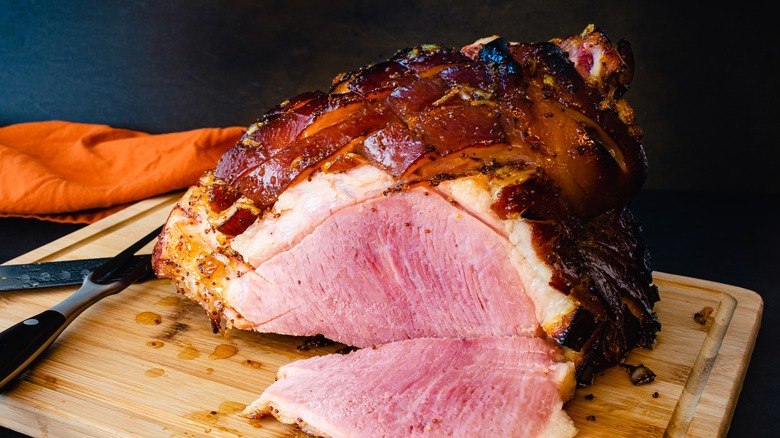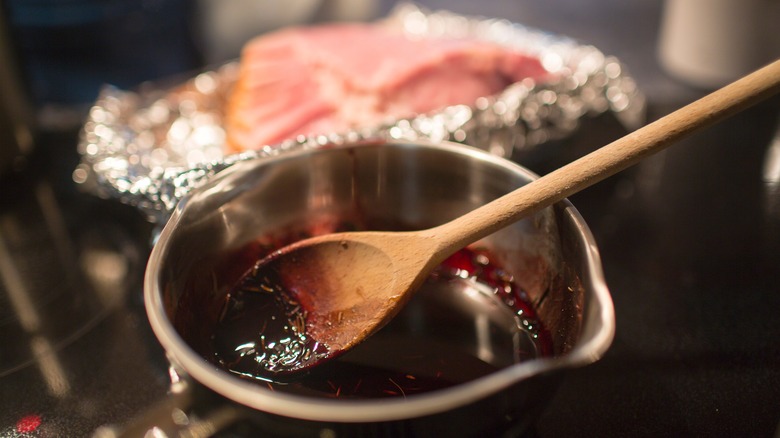Booze Up Your Bone-In Ham With Bourbon Packed Glaze
There's ham and then there's glazed ham, both tasty and both starring on countless holiday tables throughout the seasons. Each preparation method has its own merit, from baked to boiled, smoked, grilled, fried, or air fried –– but when you really crave deeply complex flavor with a sticky, crispy exterior, it's all about the glaze. It's the stuff of culinary legend, with secret glaze recipes handed down through generations. But honestly, it doesn't have to be so mysterious and complicated, especially if you embrace the concept of boozy ham with a bourbon-packed glaze.
The first consideration is developing your dream signature glaze, and the seductively smoky, sweet component you need is the bourbon. Since bourbon profoundly affects the flavor of the ham, choose a brand you like. High-quality bourbon is fairly common, considering the strict requirements for bearing the name of a straight bourbon. The rules include, among other things, the necessity of using at least 51% corn for the mash and letting the bourbon age in new, charred oak barrels. This provides an inherent smokiness from the charred oak and a slightly sweet flavor from the corn.
Then, it's all about the whiskey's compatibility with other rich, saucy, glaze-y ingredients. When combining the bourbon with other glaze options such as brown sugar, Dijon mustard, honey, cinnamon, molasses or maple syrup, or a citrus splash from orange or pineapple juice, you'll end up with an irresistible bourbon brown sugar glaze headed for your ham.
Prepping the ham and applying the bourbon glaze
It's equally important how and when the bourbon glaze enters the cooking equation. The calculations for cooking/warming and glazing differ slightly with a spiral cut ham, but for this discussion, we're talking about a bone-in ham that's been precooked before it arrives in your kitchen (this is common for most hams sold in U.S. supermarkets). An uncooked ham will take much longer in the oven.
Before adding the glaze, maximize the potential of your glazed ham with a couple of things. The first is the process of scoring the ham, which allows the glaze to seep into the inner depths of the meat as it cooks. The diagonal and cross-cut lines need only be about one-half to one-third inch deep across the entire top of the ham. For extra depth and complexity, you can drizzle some straight bourbon into the score lines before applying the glaze.
Glazing time arrives after the ham has been heated for a while, typically to a temperature of about 120 degrees Fahrenheit. This allows the glaze to caramelize on top of the ham without burning while gently soaking into the meat. It still needs to cook longer to reach the recommended 140 degrees for precooked supermarket hams established by the U.S. Department of Agriculture (USDA). Note that it takes a long time for alcohol in the bourbon glaze to evaporate when cooking, reaching a low 5% only when heating for 2.5 hours.

